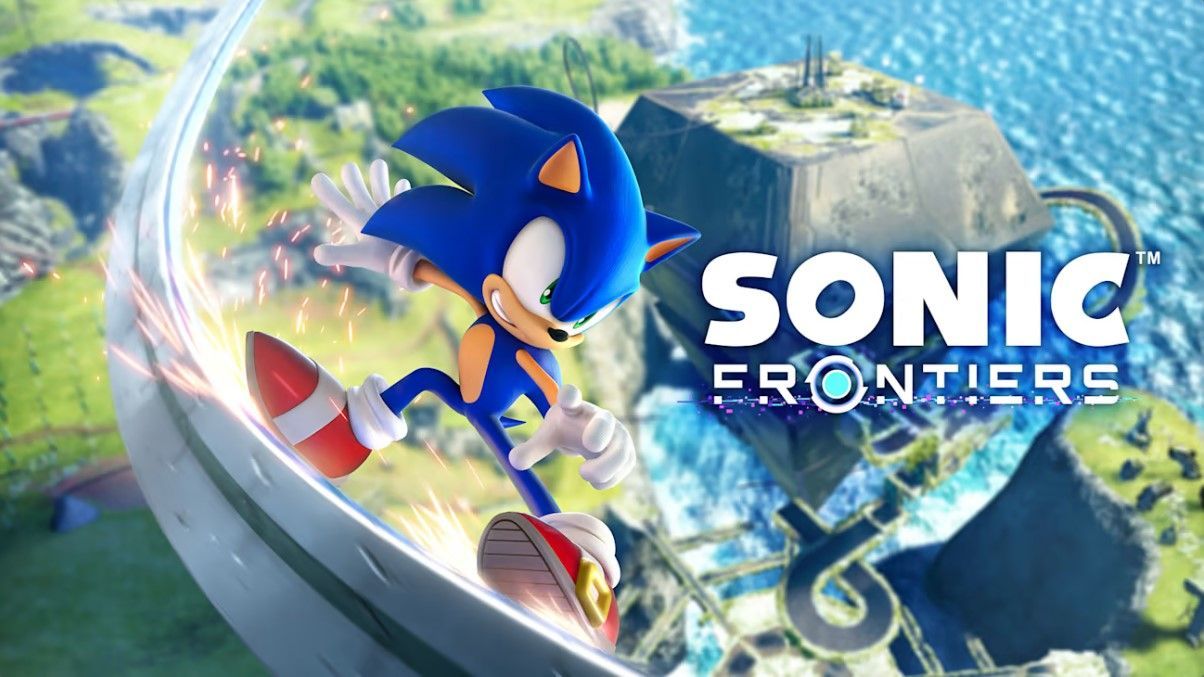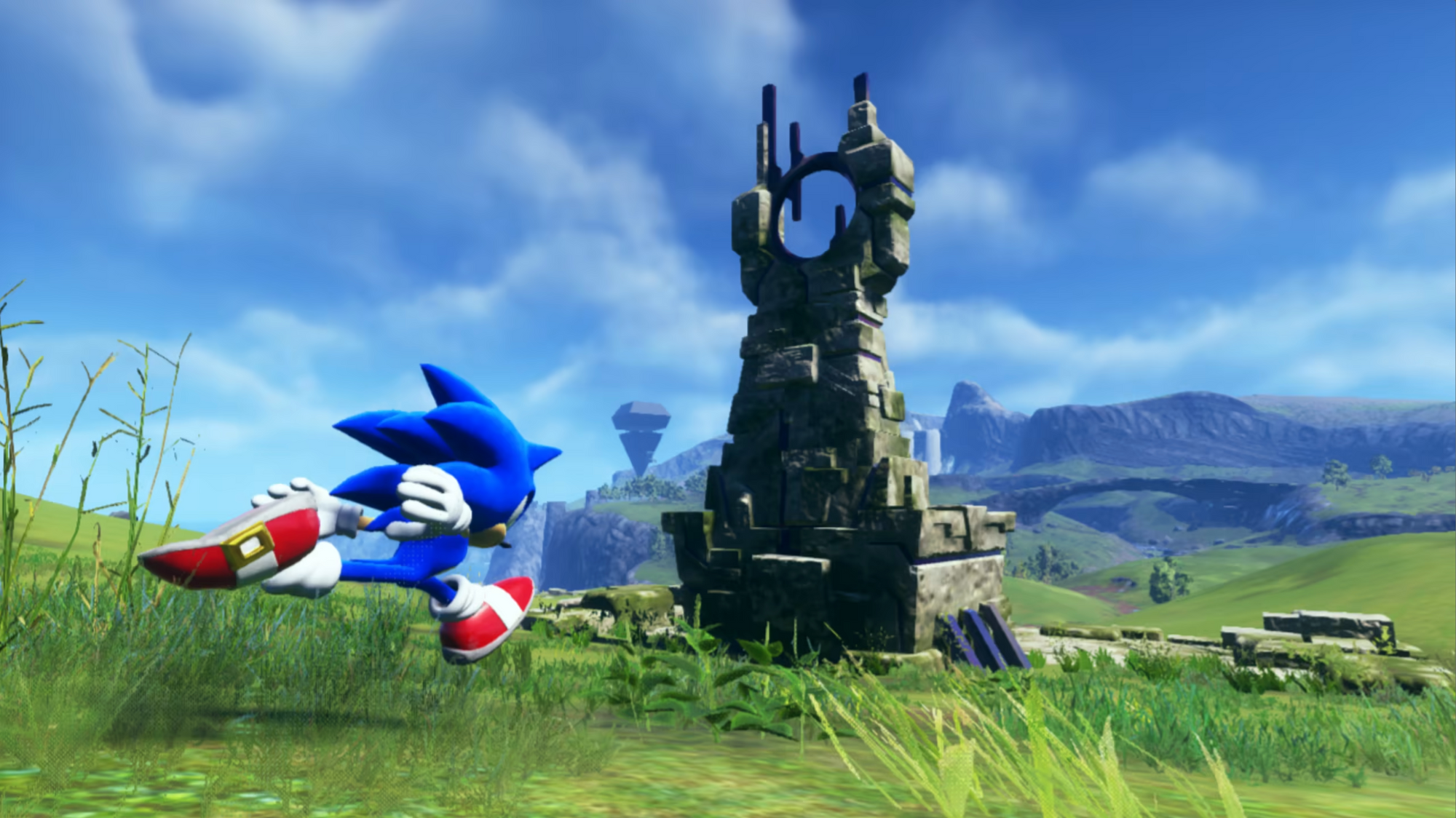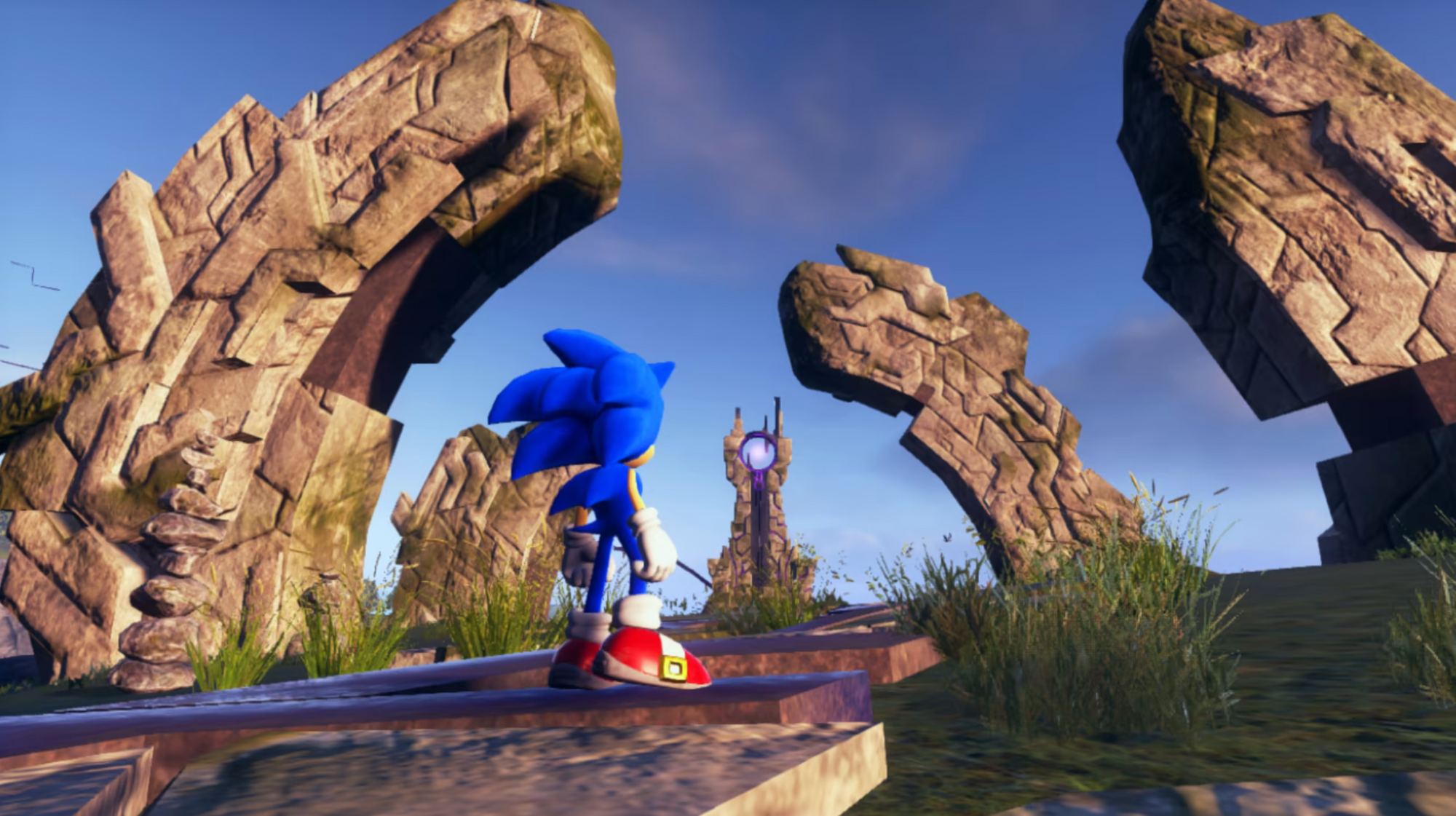Sonic Frontiers - Switch Review
"The foundation of something great."

Sonic The Hedgehog is a series I would describe as turbulent. On one hand you have some very good titles like Sonic Adventure 2, Sonic Colors and Sonic Generations. These are games that very much shaped the franchise into what it is today, and paved the way for future titles to learn from them. On the other hand, you have titles like Sonic The Hedgehog (2006), and Sonic Boom: Rise of Lyric that were objective failures and best left swept under the rug. When a series with such an inconsistent track record announces a severe left turn in game design, I personally meet it with sceptic optimism. This was my approach to the newly released Sonic Frontiers, SEGA and Sonic Team’s attempt to bring the iconic character into the open-world genre. It leaves us with the question: Do the standards of gameplay found alongside the blue blur translate well to an open world?
The Good
Speaking on the topic of gameplay, Sonic Frontiers is a success. Sonic controls well and feels about as fast as he should (which in my opinion should always be a little too fast, if you get what I mean). The game is majoritively in an open landscape, but it does feature short, detached levels that are more traditional 3D Sonic levels. What really impressed me was the combat. Sonic Frontiers boasts a very fleshed out combat system when considering previous titles. He has an array of offensive actions that aren’t just the homing attack, and a selection of defensive options that aren’t just…not being there when an enemy attacks. The game also offers a small skill tree which expands on Sonic’s combat abilities in a way that feels satisfying. The game rewards building a combo metre by giving Sonic flashy, high damaging, fast hitting moves that are honestly just fun. The defensive options include a dodge and a parry, which are both very easy to perform. The game does not incentivise last minute dodging, and you can simply hold the parry button and wait for the enemy to attack with no adverse effect. The combat honestly has a low “skill floor” that allows people new to action games an easy time, but a high “skill ceiling” that allows experienced players to pull off impressive combos.
The selection of enemies is also something to be celebrated. While the basic grunt enemy is nothing special, the game features a number of overworld bosses that each require a different strategy in order to conquer. My personal favourite was “Squid,” a flying enemy which left a trail behind for Sonic to chase it on, and fires projectiles down the path for you to dodge. It’s an example of how Sonic Team did not stray too far away from what makes a Sonic game a Sonic game when trying to make the game less of a guided experience. The first major boss of the game was also a very hype fight, and one that made me realise that Sonic Frontiers was more than what I was expecting.
If you ask me, a Sonic game isn’t really a Sonic game without buttrock, and this game does not fail to deliver. Sonic Frontiers is actually very light handed with its music, saving it for dramatic moments like major boss battles. However, Sonic Frontiers took a page from the folks behind Legend of Zelda: Breath of the Wild by pairing the overworld with a pleasant and light piano accompaniment.
TL;DR
- Great gameplay and combat
- Excellent enemy design
- The standard Sonic music is great, but used sparingly


The Bad
When I think of an “open world game,” what comes to my mind is a single congruous map that I as the player could walk from one end to the opposite without any fast travel or use of menus, if I so chose. Areas of course can be locked off by progression of course, but when the whole map is unlocked, the game is a single, unrestricted world. Sonic Frontiers unfortunately, is not that. What I would describe Sonic Frontiers as is a series of very large and sprawling levels that allow free exploration and multiple objectives within them. I would sooner liken the game’s design to Super Mario Odyssey in its progression design, but instead of 17 large kingdoms, it’s five huge maps. This allowed Sonic Team to make visually varied locales, but to call the game “open world” in my eyes is a bit of a misnomer.
The levels also feel a bit empty. There are no civilisations to visit, very few NPCs to talk to, and the things to do are fairly scattered. Outside of mini challenges, overworld bosses, and the main story progression, the game feels very hollow. Towards the end of my time with the game, I found myself just running from main story mission to main story mission, with little care from the space inbetween.
The story itself also feels less than great. The game conveys very little information about who, what, when, where, and why that I’ve felt confused in many places, as if I should already be familiar with topics and concepts that haven’t been introduced to me. I feel as though the writer, Ian Flynn, wanted to establish an air of mystery and intrigue in the game’s story, but unfortunately falls short in that regard. In the early hours especially, I found myself asking a number of questions to myself about what was happening, how did I get there, who am I trying to save, and worst of all: Why should I care?
Finally, Sonic Frontiers unfortunately does not seem to have been designed for Switch. A short draw distance on detailed textures, and a less than stellar frame rate make the game less than pretty. The game thankfully does not struggle to run, and that lacking frame rate is at least consistent, but the fact that the game was also released on Sony and Microsoft consoles, as well as PC, makes me think that the game may have been designed for those more powerful machines, and was forced to cut corners to make it work on the Switch.
TL;DR
- Not truly an open world game
- The maps feel empty
- They story feels underdeveloped
- Graphically suffers on Switch

Final Score: 7/10
What I see here is the foundation of something great. Other than some easily overlooked graphical deficiencies, the only problems Sonic Frontiers suffer from are, frankly, a lack of fluff. The criticism of a lack of content, I feel, is shared by Legend of Zelda: Breath of the Wild. A big map is not inherently good, it needs to be stuffed with content. Things to do, reasons to get distracted. It’s a common issue with a lot of open world games nowadays, but it really holds Sonic Frontiers back because there’s very few people to talk to. The game could fall back on its story, but unfortunately a mysterious story is also not inherently good without giving me a reason to care. The successes of Sonic Frontiers are considerable, but unfortunately the game suffers from under-actualisation.
However, what is here makes me excited for what comes next. If Sonic Team takes the lessons learned here and applies them to their next game, I think it has the potential to become something special. As for Sonic Frontiers, I would recommend it to established fans of the series. If you found this review after a quick Google search while standing in front of the display at your local game store, with no attachment to the series or its characters, your mileage may vary.
Thank you for checking out our Sonic Frontiers Switch review, thank you to Sega (via Five Star Games) for providing the review code and thank you to our Patreon Backers for their ongoing support:
- Andrew Caluzzi (Inca Studios / Camped Out)
- Bel Cubitt
- NintenVania Podcast
- Rachelle Suri-Tucker
For more reading, check out our Tactics Ogre: Reborn review.